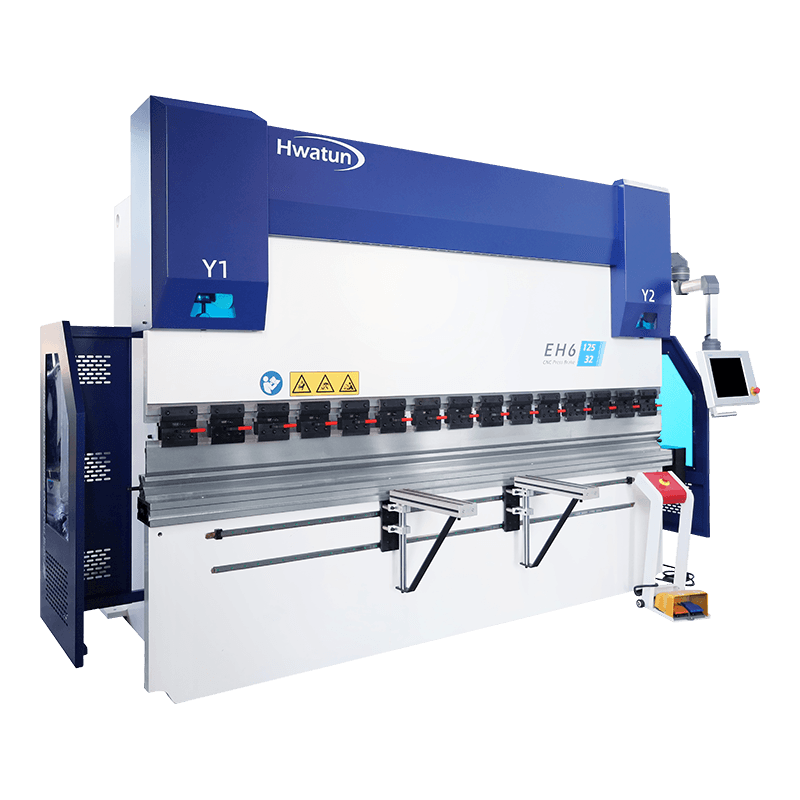Web Menu
Product Search
Exit Menu
How durability and stability is the CNC PRESS BRAKE?
The durability and stability of CNC Press Brake are important indicators for measuring its performance and long-term use value. These characteristics mainly depend on factors such as equipment design, manufacturing process, material selection and daily maintenance. The following is a detailed analysis of the durability and stability performance of CNC bending machines from multiple aspects:
Durability analysis
Body structure and material
High-strength material:
The body of CNC bending machines is usually welded with high-strength cast iron or high-quality steel plates, and has extremely high rigidity and resistance to deformation. This design can effectively reduce mechanical fatigue and deformation during long-term use, thereby extending the life of the equipment.
Heat treatment process:
Some high-end CNC bending machines heat or surface harden key components such as sliders and workbenches to improve wear and impact resistance.
Hydraulic system and servo system
Hydraulic system:
Hydraulic-driven CNC bending machines are known for their strong bending force and stability. High-quality hydraulic components such as oil pumps, cylinders and seals ensure long-term reliable operation of the system. If the hydraulic oil is replaced regularly and the filter is cleaned, the service life of the hydraulic system will be significantly longer.
Servo system:
Servo-driven CNC bending machines are favored for their high accuracy and low energy consumption. Key components such as servo motors and ball screws are more durable, but they require regular lubrication and inspection to avoid performance degradation due to wear.
Mold quality
The mold is one of the core components of the CNC bending machine. Its material and processing accuracy directly affect the durability of the equipment:
Steel mold: has high hardness and wear resistance, suitable for mass production.
Cemented carbide mold: suitable for bending of high-strength materials, with a longer service life.
Coating mold: The mold can be further improved by surface hardening or coating treatment (such as nitriding or chrome plating).
Control system
Modern CNC bending machines are usually equipped with high-performance CNC systems (such as Delem, Cybelec, or Siemens controllers). These systems have high stability and anti-interference capabilities, and can maintain precise control during long-term operation.
If the control system is properly designed and properly maintained, its service life can usually reach more than 10 years.
Stability analysis
Stability of mechanical structure
Rigid design:
The body of CNC bending machines is usually made of an integral cast or welded structure, which has extremely high rigidity. This design can effectively reduce vibration and deformation, thereby improving the stability of the bending process.

Parallelism and perpendicularity:
High-end CNC bending opportunities make precise adjustments to the parallelism of the slider and workbench to ensure consistent bending angles. This design is particularly important for the machining of complex workpieces.
Stability of hydraulic and servo systems
Stability of hydraulic system:
The hydraulic system achieves precise control through pressure sensors and proportional valves, which can provide stable bending force. However, the stability of the hydraulic system is greatly affected by temperature changes, so it is necessary to be equipped with a cooling device or a constant temperature system.
Stability of servo system:
The servo system achieves high-precision positioning through closed-loop control, and its stability is better than that of traditional hydraulic systems. In addition, the servo system is faster to respond and is suitable for high-speed bending tasks.
Automatic compensation function
High-end CNC bending machines are usually equipped with automatic compensation systems (such as deflection compensation or angle compensation) that can automatically adjust bending parameters according to changes in material thickness and length. This feature significantly improves the stability and consistency of bending.
Repeat positioning accuracy
The repeat positioning accuracy of CNC bending machines is usually between ±0.01mm and ±0.05mm, depending on the manufacturing quality of the equipment and the performance of the control system. High-precision repeat positioning capability is one of the key indicators of equipment stability.
Factors that affect durability and stability
Operating environment
Temperature and humidity:
High temperature or high humidity environments may cause hydraulic oil to deteriorate or aging of electronic components, which will affect the stability and life of the equipment.
Dust and impurities:
Dust and metal chips in the working environment may enter the hydraulic system or rails, causing wear or stagnation. Therefore, it is recommended to use a CNC bending machine in a clean environment and to clean the equipment regularly.
Maintenance
Hydraulic system maintenance:
Regular replacement of hydraulic oil, cleaning filters and inspecting seals can significantly extend the service life of the hydraulic system.
Lubrication maintenance:
Regular lubrication of slider rails, ball screws and other moving parts can reduce friction and wear and improve equipment stability and durability.
Electrical system inspection:
Regularly check the wiring and heat dissipation of the control system to avoid equipment shutdown due to electrical failures.
Operation specifications
Incorrect operation methods (such as overloaded operation or quick start/stop) can cause premature wear or damage to the equipment. Therefore, it is crucial to use the equipment strictly in accordance with the operating manual.
In practical applications, CNC bending machines are widely used in metal processing, automobile manufacturing, aerospace and other fields with their high precision, high efficiency and high reliability, and have become an indispensable key equipment in modern industrial production.
News categories
Product categories
Related Products
 +86-159 5138 1316
+86-159 5138 1316 +86 180 6819 3096
+86 180 6819 3096 [email protected]
[email protected] Group 4, Xinba Village, Binhai New Area (jiaoxie Town), Laoba Port, Nantong City, Jiangsu, China.
Group 4, Xinba Village, Binhai New Area (jiaoxie Town), Laoba Port, Nantong City, Jiangsu, China.
Copyright © Nantong Hwatun Heavy Machine Tool Co., Ltd. All Rights Reserved.

 Eng
Eng  简体中文
简体中文 Español
Español русский
русский







